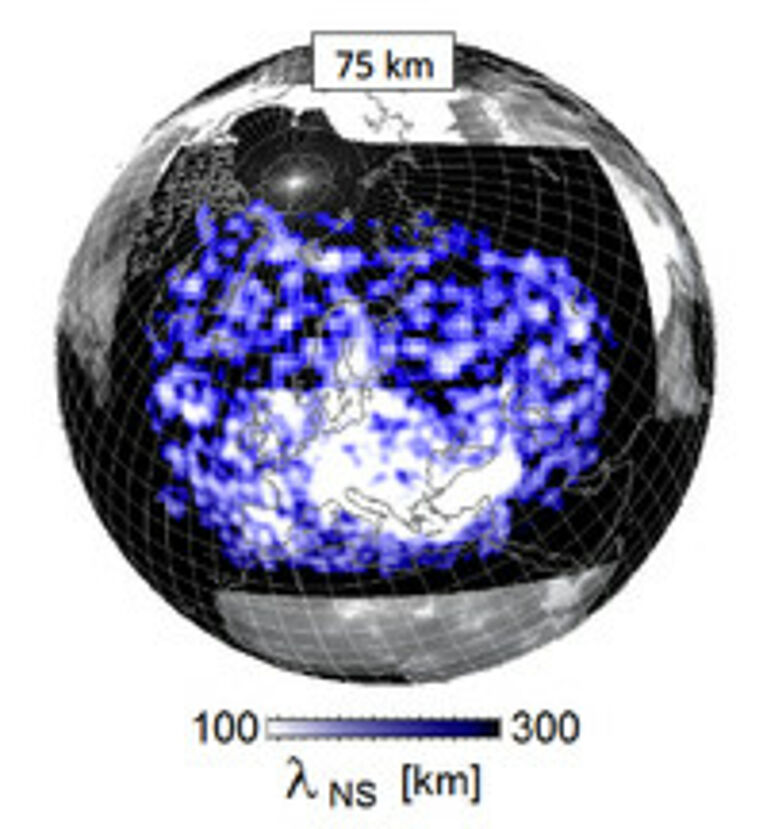GeoScale: A framework for multi-scale seismic modelling and inversion.
PI: Andreas Fichtner (ETH Zurich)
Co-PIs: Daniel Peter, Tarje Nissen-Meyer, Marcus Grote, Domenico Giardini (ETH Zurich); Olaf Schenk (USI)
1. September 2013 - 31. August 2016
Abstract
We propose to develop the computational framework for multi-scale seismic waveform modelling and inversion. This is intended to (i) position Swiss computational geosciences in the emerging exascale era, (ii) to shed light onto the fine-scale structure, dynamics and evolution of the Earth, and (iii) to enable seismic waveform inversion technology for non-experts in HPC.
Project Summary
Complex multi-scale interactions are characteristic for the physics of the Earth, and their proper quantification is key to the integration of inter-dependent geophysical systems that are today mostly treated as isolated. Resolving structures and processes on a wide range of interacting spatio-temporal scales is a unifying grand challenge in all branches of geophysics that must be addressed in order to achieve a comprehensive understanding of the Earth as a multiphysics system. As part of the Domain Science Network Solid Earth Dynamics, our goal is to address the challenge of multi-scale Earth modelling and inversion through a coordinated inter-disciplinary effort combined with long-term application support that ensures a sustained impact on the geoscientific community.
Key to an improved understanding of the Earth as a dynamic system are detailed models of its internal structure, constrained by seismograms recorded at the Earths surface. Waveform inversion based on numerical wave propagation and adjoint techniques can assimilate complete seismograms into 3D models of elastic and anelastic structure, while fully accounting for the physics of wave excitation and propagation in complex media. Highly resolved 3D tomographic models are central in the solution of diverse solid Earth problems. These include (i) the predictive modelling of earthquake-induced ground motion, (ii) the real-time assessment of tsunami risk, (iii) the search for hydro-carbon and mineral resources, and (iv) geodynamic data assimilation to infer the evolution of Earths convective flow pattern.
While waveform inversion technology is evolving rapidly, it is still in its development stage. A coordinated effort is needed to build a flexible framework that lifts full waveform inversion to the next level where tomorrows computational resources can be harnessed effectively.
Within the GeoScale project, we will develop a Data Management Framework for the scalable parallel processing and measurement of large seismic waveform data sets directly on HPC systems. This will avoid the time-consuming transfer of massive data sets between supercomputing centres and local machines. The system will include large-scale visualisation tools and capabilities for automatic data access from online data centres.
In coordination with the Data Management Framework, we will develop a modular Modelling and Inversion Framework with well-defined interfaces between the key components of a waveform inversion scheme. These components are: (i) seismic data access and processing, (ii) forward and adjoint modelling, (iii) quantification of waveform misfits and computation of adjoint sources, and (iv) non-linear optimisation scheme for multiple nested inversions on different scales. Within the Modelling and Inversion Framework, we will develop efficient data structures for Earth models and sensitivity kernels, complemented by visualisation tools.
The framework developments will be driven by a global multi-scale waveform inversion. This real-data testbed will guide new developments towards the balance of generality and user-friendliness that is needed to make our frameworks attractive for researchers with no or little prior knowledge in waveform inversion. The resulting multi-scale model of the Earth will furthermore demonstrate the applicability of our developments, and it will establish a link to the geophysical exploration, seismic risk and geodynamics communities.
The impacts of our project are manifold: The framework development will allow us for the first time to assimilate all regional and global seismic data into one consistent tomographic model. The ability to handle simultaneous inversions on various scales will produce the next generation of 3D seismological Earth models where both the crust and the mantle are resolved. This model will be the basis of improved seismic ground motion predictions, seismic hazard analyses, and geodynamic data assimilation.
Our developments will be transportable directly to exploration seismic applications. Being deliberately generic, the components of our framework have the potential to serve as a blueprint for conceptually similar inverse problems, e.g. in ground-water and reservoir monitoring, electro-magnetic sounding, and atmospheric tomography. Finally, the waveform inversion framework will allow us to react quickly to future developments, for instance, in HPC systems or nonlinear optimisation. The ability to react quickly with minimum effort ensures long-term competitiveness, and it will accelerate the development of waveform inversion technology in general.
